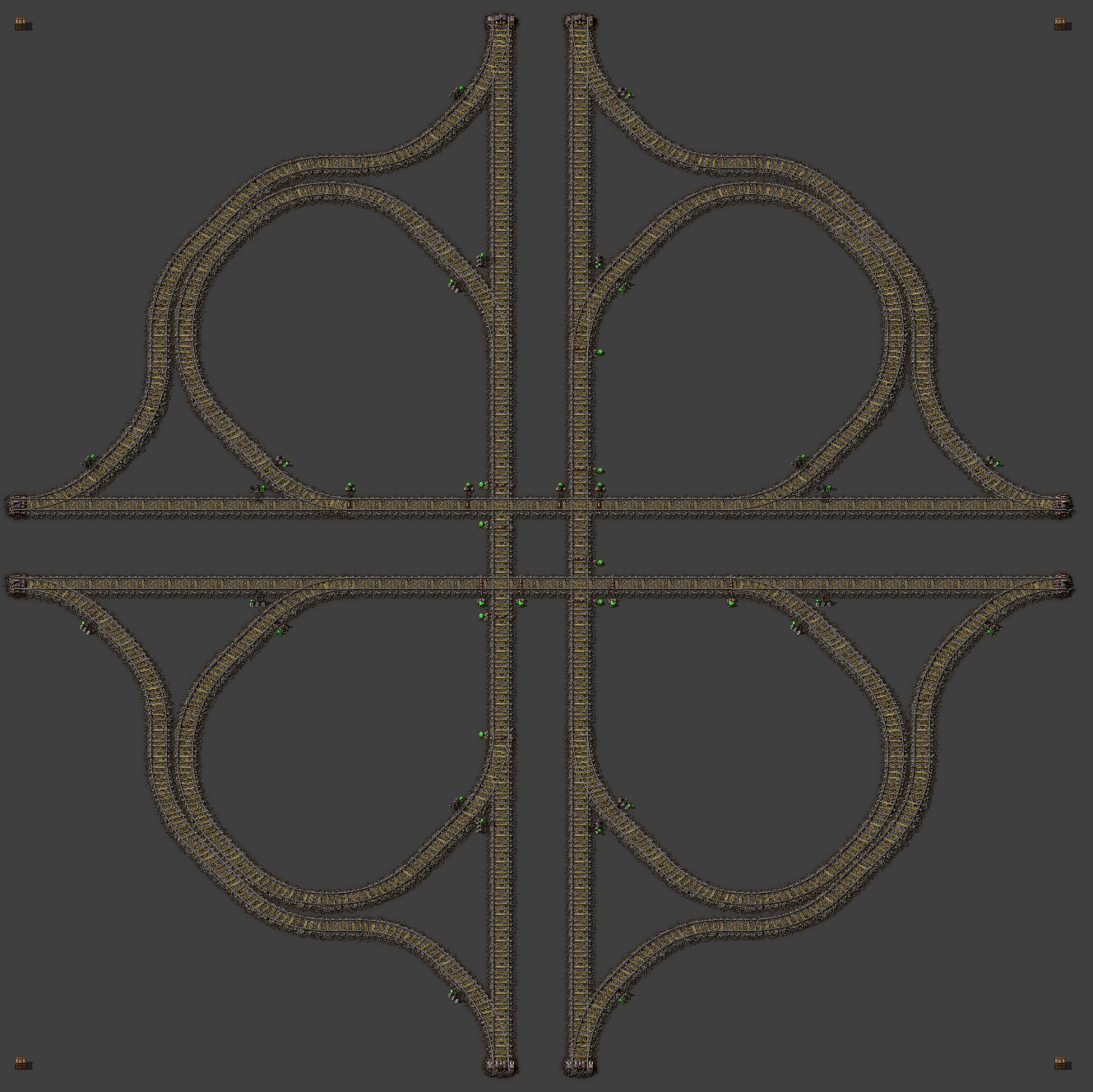That's actually been really helpful. I've been through all the tutorials, incidentally, but they felt kind of... inadequate. I wonder if they might conceivably add a "tutorial mod" interface where the community could write their own tutorials.
Its about space for signals. If one could squeeze in signals and break this into multiple segments it would help. Otherwise game considers this a one segment and it wont let other trains enter while its occupied.
Right. Basically what I was thinking, but I didn't know how to say it effectively. On a real train line, you'd have those tracks passing each other so closely that you can't put a train on each track, let alone squeeze signals onto it so the trains know what to do. But if you spread it out a bit, you could signal everything and improve matters.
Cloverleaf might work, but here it will have same problems, as in real life - connecting traffic on exit\entry from the leafs.
Don't you have that with everything, though? Whenever you have two tracks merging onto one, it seems like that's an issue that has to be handled with signals, and that's essentially every turn in any direction.
I feel like some amount of this can be covered with a simple examination of which trains need to go to which stations. It's definitely most flexible if every train can go to every station from every other station, but is that really necessary?
Rhetorical question, incidentally, it's a question you've undoubtedly already asked and answered for your specific case.
Oh, you are from States. So, maybe you heard how they turn left in Michigan

I've lived all over the damn place, so I am familiar with the "Michigan left" - I just forgot it existed until you said something. In DC, they have alternating one-way streets with no left turn, which amounts to the same thing. And I do not believe it is a coincidence that Detroit and DC frequently rank highly on lists of "worst traffic in the US."

It's worth asking why they have these things, though, and I think the answer comes down to human impatience and belligerence - which automated trains don't have. If two organic drivers try to make a left at the same time from different directions, they don't just block one another, they honk and scream at one another while refusing to give ground. This impedes all the traffic for no good reason. But if you signal your intersections properly, your trains won't try to make two lefts at the same time; they'll just obey the signals.
Of course, a properly signaled intersection is going to be slower than an unsignaled intersection. That's the price of like, not running your trains into one another: at least one train in every potential collision has to stop. So in the worst case scenario, how many potential collisions do you have? Because that's the minimum number of trains that have to stop.
And it seems like that's the bottleneck you want to avoid: too many trains stopping at once. So the question I'd ask here is, imagine that your train is approaching the intersection and a left turn would force one or more other trains to stop. If it, instead, takes a right and makes a U-turn... how likely is it that it will
still force trains to stop on its way through the junction?
So let's say you've got two lanes running north and two lanes running south. You're on the inner northbound lane, and there is a train alongside you on the other northbound lane. You make a right, forcing this train to stop. You begin to make your U-turn, and once you clear that train's path, it begins to accelerate on the northbound lane again. At the end of your U-turn, does this train force you to stop as well, anyway?
If you swap the trains, so you're in the outer lane, you get the same scenario with the same probability: are the trains alongside one another at the correct distance that one is forced to stop? If one is forced to stop, does it then force the other to stop after the U-turn?
On consideration, the probability that you will make trains coming the opposite direction stop is identical no matter how you cross those tracks. For example, if you would make the train stop when making a left, making a right and a U-turn gives it time to pass. But that also gives a train on the same track enough time to get close enough that it would
not have stopped for you to take a left, but it
must stop for you to cross the tracks after your U-turn.
So the only thing that matters here, I think, is how likely you are to have two trains alongside one another heading in the same direction. Because that's the only time anything is different from just making the left, unless of course you are running a shedload of trains bumper-to-bumper at speed.
